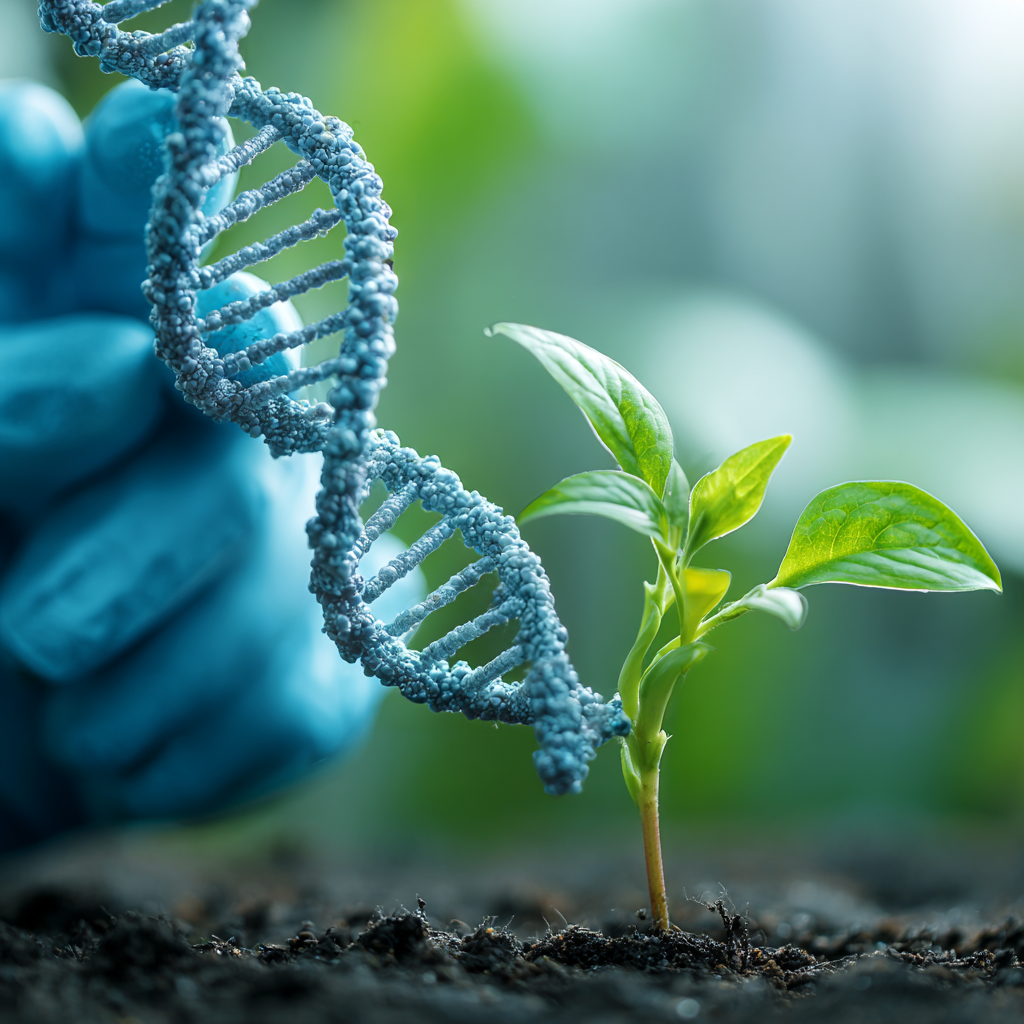Genetic engineering is one of the most groundbreaking advancements of the 21st century. By manipulating the DNA of organisms, scientists can create new traits, cure diseases, and even address food security challenges. This article explores how DNA plays a pivotal role in genetic engineering and how its application is transforming both medicine and agriculture.

Understanding DNA and Its Role in Genetic Engineering
DNA, or deoxyribonucleic acid, is the molecule that contains the genetic instructions necessary for the development, functioning, and reproduction of all living organisms. Every cell in an organism carries a complete set of DNA, and the sequence of nucleotides (adenine, thymine, cytosine, and guanine) within DNA determines the organism’s traits.
Genetic engineering involves directly manipulating this DNA to alter the traits of an organism in a controlled way. Scientists use various techniques, such as CRISPR-Cas9, to make precise changes to the DNA sequence, allowing them to enhance or suppress specific genes.
Revolutionizing Medicine Through DNA Manipulation
Genetic engineering is having a profound impact on medicine, offering the potential to treat diseases at their genetic roots. Traditional medical treatments often focus on managing symptoms, but genetic engineering aims to cure or prevent diseases by addressing the underlying genetic causes.
Gene Therapy: A New Frontier in Treatment
Gene therapy is one of the most exciting applications of genetic engineering in medicine. It involves inserting, altering, or removing genes within a patient’s cells to treat or prevent disease. For example, scientists are working on gene therapies for inherited disorders like cystic fibrosis and muscular dystrophy. By delivering a functional gene into a patient’s cells, these therapies can correct genetic defects and restore normal cellular function.
Customized Medicine: Tailoring Treatments to Individuals
Another promising area is personalized or precision medicine. Genetic testing can identify genetic variations that affect how a person responds to certain drugs. By understanding an individual’s genetic makeup, doctors can prescribe medications that are more effective and have fewer side effects. This has already been applied in cancer treatment, where genetic profiling of tumors helps guide therapy choices, increasing the chances of successful outcomes.
Genetic Engineering in Agriculture: Feeding the Future
DNA manipulation has also had a profound effect on agriculture. With a growing global population and increasing challenges related to climate change, genetically engineered crops are seen as a critical tool in ensuring food security.
Creating Genetically Modified (GM) Crops
Genetically modified (GM) crops are plants whose DNA has been altered using genetic engineering techniques. These modifications can confer traits like resistance to pests, tolerance to herbicides, or the ability to grow in challenging environments. For example, genetically modified Bt cotton contains a gene from the bacterium Bacillus thuringiensis, which makes the plant resistant to certain insect pests. This reduces the need for chemical pesticides, benefiting both the environment and farmers.
Enhancing Nutritional Content
Genetic engineering is also being used to enhance the nutritional content of crops. One of the most well-known examples is Golden Rice, which has been engineered to produce higher levels of provitamin A (beta-carotene). This could help address vitamin A deficiency, a major health issue in many developing countries, where it leads to blindness and immune system impairments, particularly in children.
Climate-Resilient Crops
As climate change affects global food production, scientists are working to develop crops that can withstand extreme weather conditions, such as drought, flooding, and high temperatures. By inserting genes that promote resilience, plants can be made more adaptable to changing climates. This could greatly improve food security, especially in regions that are particularly vulnerable to climate impacts.
Ethical Considerations and Challenges
Despite the potential benefits, genetic engineering raises ethical questions that need careful consideration. In medicine, for instance, gene editing in humans—especially germline editing, which can alter an individual’s genetic makeup and be passed down to future generations—has sparked significant debate. Ethical concerns also extend to the use of genetic modifications in agriculture, with some critics questioning the long-term ecological impacts of GM crops and the ethics of patenting living organisms.
Regulatory bodies, including the World Health Organization (WHO) and the Food and Agriculture Organization (FAO), are continuously working to address these concerns through guidelines and safety protocols. However, as technology advances, ongoing discussions about safety, ethics, and regulation will remain crucial.
The Future of DNA in Genetic Engineering
As technology continues to evolve, the role of DNA in genetic engineering will only expand. In medicine, gene editing technologies like CRISPR-Cas9 are becoming more precise, making treatments more effective and accessible. In agriculture, advancements in gene editing could lead to crops that are not only more resilient but also more sustainable, reducing the environmental footprint of food production.
In conclusion, DNA is the foundation of genetic engineering, and its manipulation holds immense promise for the future of both medicine and agriculture. By harnessing the power of DNA, we can solve some of humanity’s most pressing problems, from curing genetic diseases to ensuring a stable and sustainable food supply.

